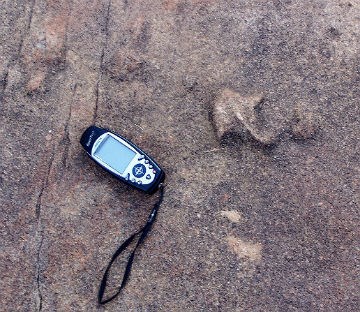
NPS photo / Brad Markle Trackways in the Navajo Sandstone Massive sand dunes preserved in the Early Jurassic Navajo Sandstone create the towering canyon walls of Zion, and occasionally give us a unique glimpse into ancient life. A few remote and inaccessible locations within the Navajo preserve dinosaur trackways, where multiple individual dinosaurs left their footprints. Preserving a footprint on a dune is very difficult, because the loose, dry sand forming the track can be blown away easily. Most tracks in the Navajo are found in deposits from ancient oases or on wetted sand surfaces, where the moist sand was able to retain the detail of the track. While determining the species of the track-maker is difficult at best, paleontologists can use trackways to gain clues into dinosaur behavior, such as migration patterns and herding. Elsewhere on the Colorado Plateau, more trackways and even some dinosaur bones have been found within the Navajo, which leads paleontologists to believe that such future discoveries are possible in Zion. Learn more about how footprints become fossils Learn more about the Navajo Sandstone Return to the main Paleontology page |
Last updated: June 13, 2015
